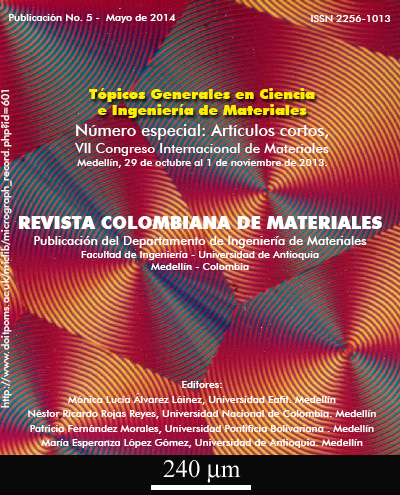.
DOI:
https://doi.org/10.17533/udea.rcm.19446Keywords:
Cassava peel, Agricultural wastes, Particle boards, Recycling materialsAbstract
Downloads
References
El Universal “Seis millones de hectáreas de bosque taladas en últimos 20 años en Colombia”. En:[http://www.eluniversal.com.co/cartagena/ambiente/seis-millones-de-hectareas-de-bosque-taladas-en-ultimos-20-anos-en-colombia-62406]. 2012.
Cabo-Laguna, M. “Ladrillo ecológico como material sostenible para la construcción”. Trabajo de grado (Ingeniero Técnico Agrícola en Explotaciones Agropecuarias). Navarra. Universidad Pública de Navarra. 121p. 2011.
Pozo-García, C. P. “Aprovechamiento del Bagazo de Caña de Azúcar en la Fabricación de Bloques Ecológicos para Mampostería Liviana”. Riobamba. Escuela Superior Politécnica de Chimborazo, 172 p. 2011.
Gatani, M, Arguello, R. “Sustainable construction materials with peanut shells based on portland cement” Construction and Building Materials, p.47. 2005.
Obregón-Sánchez, C. “Tableros Aglomerados: Una Solución de Vivienda con Carácter Social”. El Mueble y La Madera,52, p. 48. 2006.
Manzano Sosa, A. “Propiedades físico -mecánicas de tableros aglomerados de partículas de 12, 16 y 19 mm. de una empresa del estado de Durango”. Chapingo, Méx. Tesis Universidad Autónoma Chapingo.65 p. 2000.








